Travelling with a Bath Lifter
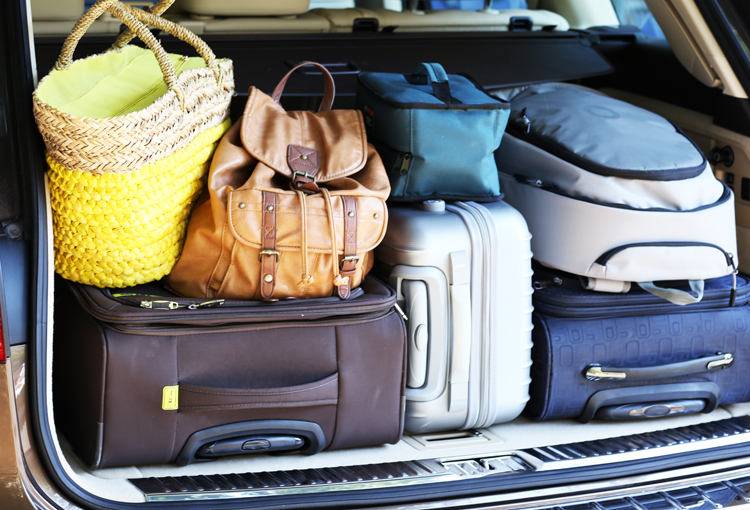
As the summer holiday season approaches thoughts will inevitably turn to the logistics of packing for our relaxing time away. For those of us who holiday in the UK, the main logistical issue will be ensuring we have all items of clothing to deal with the range of weather conditions we are likely to have thrown at us. However, the logistics of packing becomes far more complicated for older and disabled people who have the additional challenges of deciding what equipment they might need to take on holiday so that they can enjoy the relaxing benefits of going away on holiday.
Over the past few years travel guides, holiday accommodation websites and brochures have begun to improve the accessibility information provided on places to visit and to stay. With this information, older and disabled people are able to make an informed decision on where they can experience a relaxing holiday. Understandably, people want to take their own equipment, such as bath lifters, on holiday. Familiarity with the way their own equipment works, or what the condition of any equipment provided by holiday agents will be in on arrival, reduces the worry of having no equipment or relying on loaned piece of equipment.
Sadly, as social services occupational therapists I was seldom in the position where my professional reasoning extended beyond the usability of bathing equipment in the home. Thankfully, this soon changed when I moved into independent practice. In this new role, I had to provide advice and recommendation to people who wanted to be able to take bathing equipment on holiday. This requirement to take equipment on holiday has added a whole new dimension to my professional reasoning.
Travelling with a Bath Lifter
Through this experience, I have following tips about taking bathing equipment on holiday. Firstly, the bathing equipment can’t be bulky or heavy. People will not travel with bathing equipment that takes up valuable room for luggage and other holiday paraphernalia.
People also want to avoid having to lug a heavy piece of equipment from the car to the accommodation. As well as this, the equipment needs to be discreet. This is a tricky one because wanting to hide the use of equipment feeds into the medical model of disability, and why should people feel embarrassed about having to use equipment. However, in my experience people want to have the choice about this and having something that doesn’t stick out like a sore thumb as you unpack the car is an important consideration for many of us.
Finally, I have learnt that the equipment has to be able to fit into the bath. This point may seem obvious, but the design of the bath at home is unlikely to be the same as the one on holiday. Therefore, it is important that the bath lifter is easy to adjust and has the flexibility in design to accommodate a wider range of bath shapes, materials, and depths.
Whilst very few of the bath lifters on the market can achieve all of the requirements I have just highlighted above the Mangar Bath Cushion comes close. Being lightweight, extremely portable, and having the type of powerful suction feet that fits most bath surfaces, the bath cushion offers the discreet and flexible bathing solution people want when they go on holiday. As occupational therapists, we know that holidays contribute to the health and well-being of the people we work with. Whilst there may be funding issues around the choice of equipment we recommend, it is still important we consider how the choice of bathing equipment will influence what older and disabled people will have to pack when they go on holiday.
Case Study: Lift Assist Equipment At Retirement Village Prevents Worker Injuries

”What I particularly like about the Camel is that we can just grab it and run.”
Richmond Village is a five star, luxury retirement village in Northampton, where guests can select from a range of accommodation choices, including apartments for independent living, assisted living apartments and bedrooms.
Registered manager Cathy Goldsmith is always looking to ensure residents have the best possible care and enjoy life at Richmond. Cathy discovered the Mangar Camel lifting cushion at a care exhibition and became an immediate advocate.
Cathy says, “The staff have quite a large space to cover here so when a resident falls, we need a lifting solution that allows us to get help to them quickly.”
The villages have been built to give residents an attractive, peaceful environment in which to live full and active lives. Every village is a community within a community with coffee shops, stunning gardens, hairdressers and first class restaurants to enjoy.
Home to around 150 residents, staff are on permanent call if a resident should find themselves in any difficulty.
Cathy says, “What I particularly like about the Camel is that we can just grab it and run. It’s so portable which means we can lift residents wherever they have fallen, whether it’s in the gardens, at home in their bathroom or in the public coffee shop.”
Another consideration for Richmond is being able to keep residents settled in their homes.
Cathy went onto say, “More often than not, if we call an ambulance they will take the resident to hospital to be checked out, which means they may spend many hours waiting in ER.
“The Camel lifting cushion has given us the option of performing the lift ourselves, with minimal fuss and in no time at all a resident can safely return to their apartment or bedroom.”
Moving fallen residents is a regular part of the working day for many healthcare professionals and Richmond recognises that when lifts are required, the Camel protects both staff and residents from further injuries that can be sustained during a manual lifting.
Mary Edwards, 90 lives in a Richmond Village assisted living apartment but has fallen a couple of times in her small hallway.
Mary says, “Staff use the Camel to get me quickly back on my feet. It feels comfortable, secure and safe. I thoroughly approve”
Case Study: Perry Tree Centre Putting Patient Dignity First

Perry Tree Centre is a care centre that delivers services for older adults. Within the centre there is a residential care home, community links service and an assessment and rehabilitation facility. It is also home to the Erdington Elders Group which gives support to older people in the area.
Perry Tree has been specially designed to support adults with a range of needs including those arising from dementia. This award winning facility has been recognised by the University of Stirling as a DSDC Gold Award winner. The award is given in recognition of top-quality dementia design, based on the adoption and implementation of evidenced dementia-friendly principles. Perry Tree is amongst a very limited number of centres which have been credited with the award.
What do the Perry Tree Centre do?
The ethos of the centre is to support through behaviour management, focusing on an individual’s life experience to ensure their feelings are acknowledged and validated. The healthcare professionals, housekeeping teams and catering staff at the centre all appreciate the importance of understanding the triggers for behaviour in residents with dementia. The layout of the home, interactions with residents and supplementary therapies are all designed to avoid disruption, fear and distress.
Every day life at Perry Tree is mindful of individual resident’s needs and desires. The gardens can be used for relaxation, a place to indulge in a hobby or even as a source for vegetables. Meals are served in dining rooms or residents can make use of specially designed kitchens to prepare their own food. Perry Tree has also experienced great results with animals in the centre, including rabbits in the garden and pet therapy, where special visitors such as dogs and donkeys drop in.
Resident dignity is paramount and great care is taken to protect individuals from unnecessary upset. Unfortunately, people with dementia, or any cognitive impairment, have a greater propensity to fall than other adults. The fallen person needs to be returned to their feet or chair as gently, quickly and comfortably as possible.
How did Mangar Health help?
Perry Tree uses the Mangar Camel to lift fallen residents and it is their preferred lift of choice. The lifting cushion is portable enough to be used in the most awkward of places, inside or out, and delivers a solid lift very quickly. They report residents feel secure on the Camel and associated distress is kept to a minimum. By using the camel, the fallen resident’s personal dignity is protected as clothing can be adjusted to ensure privacy is maintained.
The Camel can be packed away into a small space when not in use. It is easy to use meaning all staff, from housekeeping to managers, can be called upon to implement a lift without requiring specialist training. This means if someone falls, they do not have to wait for specially trained member of staff to be located before a lift can happen.
Delroy Bonnitto, service manager at Perry Tree, believes the Mangar Lifting Cushion complements the dementia-friendly principles of the centre by reducing the risk of behaviours that can be triggered by other types of lifting equipment.
He says, “Using the Mangar lifting cushions means our residents can be raised to their feet with minimal fuss. They are comfortable, dignified and don’t feel as though they are causing a scene and upsetting fellow residents. This means anxiety levels are kept to a minimum, which is vital for anyone with dementia”.
Request a free, no-obligation demonstration of the Mangar Camel Lifting Cushion by clicking here.
Crisis Response Falls Team: Reducing Admissions and Repeat Falls
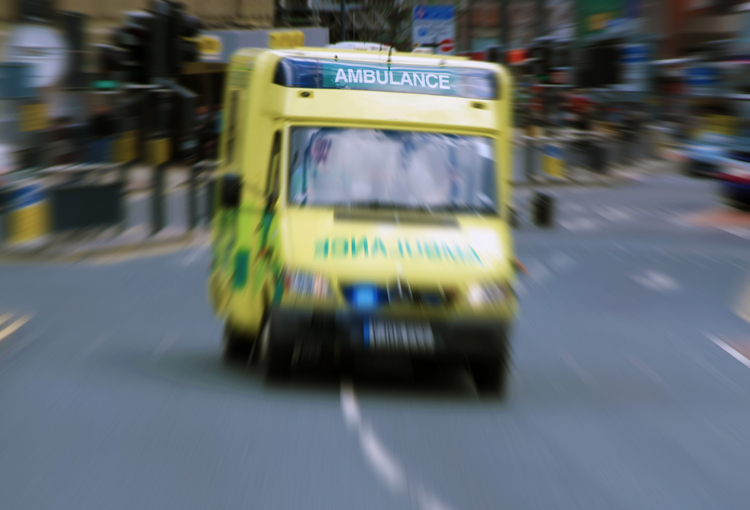
Provided by:
East Midlands Ambulance Service NHS Trust
Published by:
The following case study provided by East Midlands Ambulance Service NHS Trust describes how a demand for better falls service was effectively provided by integrated health and social services providers. The emergency lifting equipment referred to throughout the case study are Mangar ELK and Camel lifting cushions.
Details of the initiative
Falls-related calls make up about 20% of all calls received by the East Midlands Ambulance Service (EMAS); approximately 90,000 calls per year. Reducing demand on hospitals and the potential negative outcomes associated with hospital admission for patients and psychological impacts are important priorities.
EMAS covers several counties with a combined population of 4.8 million. The solution developed in the Northamptonshire area (population 700,000) is the Crisis Response Falls Team (CRFT). The CRFT comprises specialist ambulance crews and a social care support team.
The ambulance crews include 7 staff made up of paramedics and emergency care assistants who are trained in enhanced diagnosis and lifting techniques related to falls. The ambulance control’s computer system uses an algorithm to dispatch a CRFT ambulance to people who have fallen. The crews use 2 bariatric ambulances and specialist lifting equipment to ensure people of any size who fall can be helped.
Enhanced diagnosis and faster access to lifting equipment helps to reduce conveyance to the hospital and subsequent admissions. The service prior to the inception of the CRFT was a standard ambulance response, often requiring either a manual lift of a person who has fallen or a further response with appropriate equipment. In both cases, a person who had fallen may have been left in situ for a significant period of time, causing secondary injuries, exacerbating primary injuries and potentially reducing the quality of life or life expectancy.
The CRFT social care support team is provided by Northamptonshire County Council, under a contract with a social care provider. The social care team works with people who have fallen, who are referred by the CRFT ambulance crews, other clinicians or the local authority. The social care team is able to assess people in their own home and identify risk factors for repeat falls, remove trip hazards and install aids to help reduce the risk of repeat falls. They also attend A&E to assess patients and facilitate discharge, undertaking a home visit and supporting patients afterwards, thereby avoiding unnecessary admissions. Patients may be referred to consultant geriatricians for further assessment and support if required.
Falls are the leading cause of mortality in people aged over 75 in the UK
Falls are the leading cause of mortality resulting from injury in people aged over 75 in the UK (NHS Confederation 2012). Delayed responses can exacerbate these injuries and present secondary negative impacts for a patient. Even those that do not suffer an injury from the initial fall can still die if they are not able to call for help.
The number of people aged 60 or over in the UK is expected to reach 20 million by 2031 (NHS Confederation 2012), and the proportion of people living past 85 is also likely to increase significantly. This means falls will make up an even greater proportion of calls made to the ambulance service, placing a greater strain on frontline resources and staff. In addition to this, obesity levels in the UK are increasing.
Obese or bariatric patients may require mechanical lifting equipment to help them when they fall as manual handling techniques place staff at risk of injury. This can result in treatment delays and adds further pressure to the ambulance service. Bariatric ambulances are used as they can accommodate any size of the patient, in contrast to normal ambulances.
Savings delivered
This initiative saves money by reducing the proportion of falls related calls that result in hospital admission. From over 1300 referrals accepted by the CRFT in Northamptonshire in 2012, just over 1000 admissions were avoided. These were as a result of faster access to specialist lifting equipment, enhanced diagnosis to avoid conveyance to A&E and the support offered by the CRFT to facilitate discharge from A&E.
Based on the 2012 cost data, each referral accepted by the CRFT cost £778 and each admission avoided saved £1556. The net saving from 1,050 admissions avoided from 1,311 referrals was therefore approximately £640,000; equivalent to £91,000 per 100,000 population.
The cost of the CRFT response takes into account the additional staff required, training and the cost of the contract with the social care provider to provide support to those who fall. The additional equipment is a non-recurrent capital cost, accounted for under ‘Any costs required to achieve the savings’ below.
Avoiding unnecessary conveyance to hospital helps to avoid unnecessary admissions. The conveyance rate for people who fall attended by the CRFT is around 40% compared to 65% for those attended by a normal ambulance. This is due to the improved diagnosis and management of falls-related injuries provided by the specialist service.
This initiative is also likely to reduce the number of repeat falls due to improved assessment and management of risk factors, although it is not possible to confirm this with the available data. Whilst this saving cannot be accurately quantified and has not been included, the number of falls-related calls in Northamptonshire has stabilised at around 10,500 per year in contrast to previous annual rises, which were believed to be due to demographic changes.
Costs required to achieve savings
Change requires non-recurrent costs equivalent to less than 6 months’ savings. These costs include training CRFT ambulance crews in enhanced diagnosis and treatment of people who fall and the procurement of 2 bariatric-capable ambulances, plus lifting equipment.
EMAS in Northamptonshire was able to procure 2 ambulances second-hand for approximately £7000 each, with additional equipment costs of around £2000 per vehicle. This is a significant saving over the purchase of brand new vehicles. If new vehicles were required the cost would still be less than 1 year’s savings, however. Running costs of the vehicles have been taken into account in the cost of the CRFT response and reflected in the net savings.
Employing a dedicated falls team was considered more economical than providing specialist falls training and equipment to all ambulance crews in Northamptonshire.
Supporting evidence
In Northamptonshire, CRFT intervention either avoided a hospital admission directly by avoiding conveyance to A&E, or facilitated a discharge directly from A&E (therefore avoiding a hospital admission) in 1,206 cases. After further assessment, 156 of these patients were subsequently admitted to a hospital, giving an estimated 1,050 avoided admissions.
The cost of falls to the NHS is estimated at £2 billion per year in bed days, with hip fractures alone adding a further £2.3 billion per year (NHS Confederation 2012).
Quality outcomes delivered
There is a significant improvement in care quality as assessing, lifting and treating people who have fallen can be achieved faster and safer due to the improved training and equipment of the specialist CRFT ambulance crews. All patients who fall will benefit from the greater knowledge and capabilities of the CRFT compared to a standard ambulance response, but particularly those who would otherwise have to wait for a bariatric vehicle.
Care quality is also improved as risk factors for repeat falls are identified and managed appropriately by the CRFT after the first fall. This includes managing physical risks such as trip hazards, installing aids, or referral to a consultant geriatrician for the management of conditions that may exacerbate the risks or consequences of falls. The CRFT social care team supports approximately 1,000 people per year in Northamptonshire.
The social care support team is also able to assist the discharge of patients from A&E and avoid hospitalisation as they can quickly attend to assess patients in A&E and undertake a home visit. These patients are therefore at a lower risk of healthcare acquired infection and other hazards resulting from hospitalisation.
Impact on patients
The CRFT is able to safely lift and move patients who have fallen, who might otherwise be left in place until more specialised equipment is available. This helps to reduce exacerbation of primary injuries and prevent secondary injuries and distress resulting from being immobile on the floor. Patients who can be treated at the scene or in the community with the assistance of the social care team are at a lower risk of healthcare acquired infection.
Impact on patients, people who use services, carers, public and/or population experience
One significant impact of a fall is a fear of falling again. The identification of risk factors, advice and support given and the knowledge that specialist help is available, all help to reduce this fear and improve the quality of life.
An evaluation by the University of Northampton (Campbell 2013) found that patient feedback was positive. Key points given by patients included: building confidence, helping to maintain independent living and to stay at home, providing appropriate support and advice, and access to on-going care. The social support offered by the service was seen as a particular benefit to patients.
Evidence of deliverables from implementation
The initiative commenced in November 2011 in Northamptonshire and an independent evaluation (Campbell 2013) assessed its performance for 12 months.
During this time CRFT intervention reduced hospital admissions either by avoiding conveyance to A&E or by facilitating discharge directly from A&E, in 1,206 cases. 156 of these patients were later admitted to a hospital, giving an estimated 1,050 avoided admissions in the county (Campbell et al 2013).
During the evaluation period, the social care team received a total of 1,546 referrals. 85% of these referrals were accepted by the service. Over 40% of social care referrals originated from the CRFT falls ambulances. Almost 50% of these were made for the purpose of avoiding hospital admissions and 43% sought to aid discharge from A&E departments.
Prior to implementation, a steady rise in falls-related calls was observed, which was believed to be due to demographic changes such as the aging population. A year after implementation the number of falls-related calls has stabilised at around 10,500 per year in Northamptonshire. It is not possible to prove a causal link using the data available, but the initiative is believed to have contributed to this stabilisation by reducing the risk of repeat falls among those referred to the CRFT.
For the full report visit:
Case Study: Heritage Property Management Slash Worker Compensation Claims
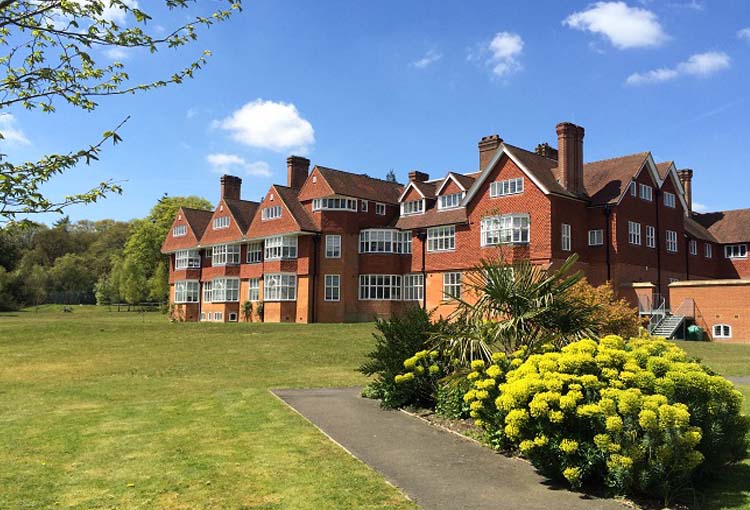
Workers compensation pay outs drop by 80%.
The following post is written by Kathleen Sharkey of Heritage Property Management
“We purchased our first Camels in May 2009. At that time we were experiencing “higher than desired” expenses in staff injuries. Our investigation revealed that the majority of back, shoulder, and neck strains were a result of assisting a resident up from the floor after a fall, or from attempting to prevent a resident from landing on the floor – breaking a fall.
“We own and operate 8 licensed Homes for the Aged in the state of Michigan and have a capacity of approximately 700 elderly residents. We employ approximately 600 staff to care for these folks.
“Prior to purchasing and training staff on the use of the Camel our worker’s compensation pay-out for all workplace injuries averaged $16,634.00 per location. In 2013 our worker’s compensation pay-out for all workplace injuries averaged $3,182.00. As you can see, this is a reduction of 80% or an average of $13,452 per location per year in payout – which more than pays for the cost of the Camel.
“Granted, the Camel is not solely responsible for this change in payout, but it has greatly reduced the extent of injuries from lifting folk off the floor. We are very focused on the importance of our personnel working safely – for the good of our residents and our staff. We have purchased second Camels for our largest homes.”
Kathleen Sharkey
Director of Operations
Case Study: ARV Independent Living Centre’s Use The Mangar ELK Outdoors
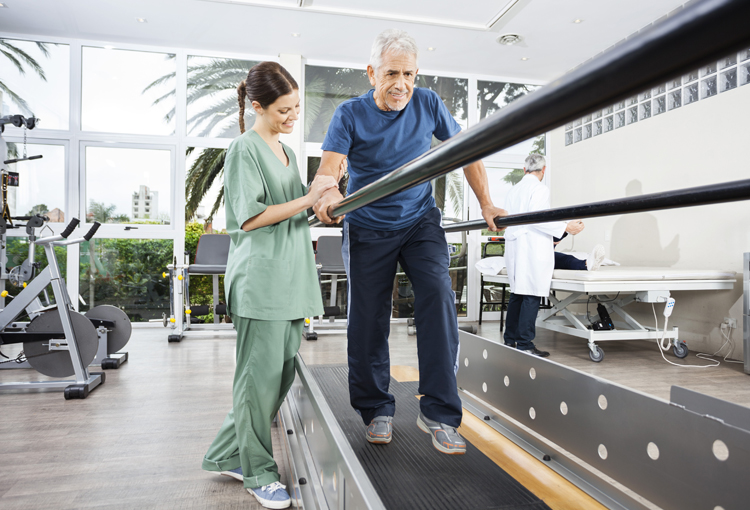
“I can’t recommend this piece of equipment highly enough.”
The Mangar ELK lifting cushion was successfully introduced into several of ARV residential facilities, with great results. After risk assessing the equipment we found it particularly suitable because of its
flexibility of use when residents fell in public areas. There was no need to screen off large areas and using the ELK was less disturbing to the fallen resident and other residents who were in the general area.
Geniene Thorgersen, physiotherapist and work place trainer said, “In my opinion, using an ELK is a far more dignified way to bring a fallen resident to an upright position. It would be my choice for client’s with any cognitive impairment and those where being manually handled is a trigger to behaviour.”
The Mangar ELK is also used in garden areas and during large social occasions. It is the most discreet and comfortable way to lift an uninjured resident quickly. ARV staff commented on the safety and ease of use of the ELK. Because it is portable, it can be taken in a car and with us on days out.
The Outpatient Physiotherapy and Hydrotherapy site also uses the ELK on the pool side to both raise patients up and lower them down. Geniene went on to comment, “In tight spaces, such as some of our smaller bathrooms, we had previously found assisting fallen residents difficult as the hoist was unable to fit into the space. The ELK has a much smaller footprint and can be rolled under the resident to facilitate sitting them up to the upright position and with aid of staff easily.
Blue Light Services Join Forces to Launch North East Emergency Medical Responder Scheme
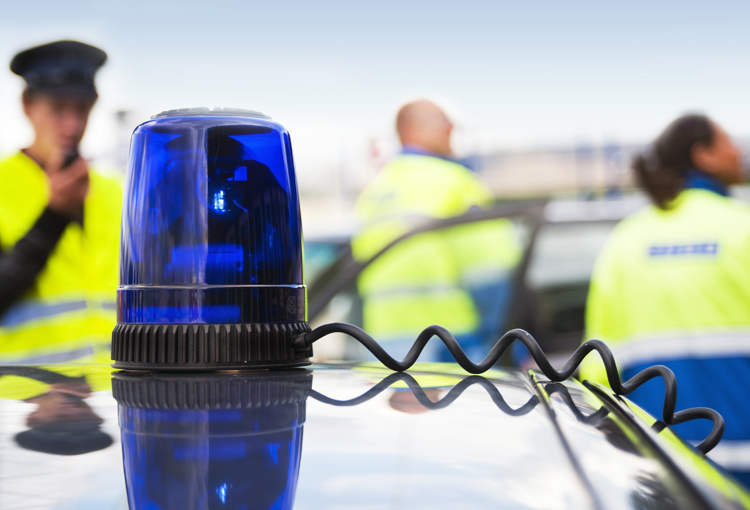
A new six-month trial scheme will see North East Ambulance Service (NEAS) and the four Fire and Rescue Services based in the region work together to save more lives.
Demand on the Ambulance Service has increased by nearly 20 per cent since 2007. During the past ten years, firefighters nationally have been attending fewer fires, thanks to their successful programmes of community safety work. At the same time, the variety and complexity of rescue incidents firefighters respond to has broadened along with the specialist skills needed to meet these challenges. These changes in activities have resulted in demand for FRS services remaining extremely high.
The Fire and Rescue Service (FRS) is not funded to provide the response to medical emergencies, however, it is already carried out in some FRSs by employees on a voluntary basis. The trial is part of a review of the terms and conditions of firefighters by the National Joint Council for Local Authority Fire and Rescue Services, looking at the current and future demands on the service and profession.
Emergency Medical Responders
NEAS Director, Caroline Thurlbeck said: “NEAS receives a new 999 call every 65 seconds, and in an emergency, seconds count.
“During this innovative trial, an Emergency Medical Responder (EMR) will be dispatched at the same time as an ambulance. Our ambition for this trial is to improve the survival rate for those people who suffer from http://mangar.co.uk/2016/01/13/blue-light-services-join-forces-launch-north-east-emergency-medical-responder-scheme/a life-threatening illness or injury in the community. The location of EMR’s within local communities could mean they are nearer to the scene and can deliver lifesaving care in those first critical minutes of the emergency until an ambulance clinician arrives, enhancing the usual emergency medical response from NEAS.
Evidence shows that an early intervention with a defibrillator or CPR can improve survival chances and also the quality of life for the patient afterwards.”
Latest figures show that a quarter of all cardiac arrests attended by NEAS have a return of spontaneous circulation, with just over three percent of patients surviving to be discharged from hospital.
During the trial, Emergency Medical Response Units, in the form of fire appliances, will deliver emergency medical services when requested by NEAS. The emergency medical services included may involve attending calls where people are suffering from chest pain, difficulty in breathing, cardiac arrest, and unconsciousness not due to trauma.
Medical Training
Emergency Medical Responders have been trained to enhance their existing medical care knowledge, including basic life support by managing a patient’s airway, giving oxygen therapy, including assisted ventilation, delivering cardiopulmonary resuscitation (CPR) and defibrillation using a semi-automatic AED and controlling blood loss.
The EMR’s are equipped with a kit which includes oxygen and an automated external defibrillator (AED) to help patients in a medical emergency such as a heart attack, collapse or breathing difficulties.
Chief Fire Officer Ian Hayton from Cleveland Fire Brigade said: “The scheme involves trained firefighters attending incidents in areas where we can reach a casualty and maintain life or reducing suffering and anxiety until a paramedic arrives. This really is a lifesaving partnership; Cleveland Fire Brigade staff can complement and work alongside the professional healthcare staff at North East Ambulance Service to improve patient care outcomes. Cleveland Fire Brigade’s ethos is to make a difference to the lives and safety of our local community. This critical partnership with NEAS allows our firefighters another opportunity to demonstrate how they can achieve that goal.”
Northumberland Fire and Rescue Service Assistant Chief Fire Officer Mark McCarty said: “We are looking forward to working in partnership with the North East Ambulance Service to provide an enhanced level of response to emergency medical incidents. Our firefighters are used to dealing with medical emergencies as part of their role and already work closely with NEAS colleagues in a number of emergency situations. In this pilot, if one of our teams is available when a medical emergency response is requested, we can be at the scene quickly to begin life-saving treatment while waiting for an ambulance crew to arrive, who will then be able to continue the treatment and provide specialist medical care. This is a great opportunity for us to use our skills and training to further benefit the whole community.”
Keith Wanley, the area manager for County Durham and Darlington Fire and Rescue Service, said: “We are extremely pleased to be involved in the regional emergency medical response trial, which will enhance the close working relationship and collaboration we have with our partner agencies. Our fire crews already save many lives through well-established home safety prevention work and by providing a professional response to a wide variety of incidents where people are trapped. From Monday, our fire crews will be expanding their response role to provide medical assistance to people with life threatening conditions, when requested by NEAS, until an ambulance crew can arrive. Also, from the end of January, they will be expanding their prevention work into a range of areas which will including advice and support to prevent trips and falls in the home and other health advice. We hope this trial will provide effective early intervention and support to save many more lives.”
Chris Lowther, Assistant Chief Fire Officer at Tyne and Wear Fire and Rescue Service, said: “Saving lives has always been at the core of what we do and crews are used to providing life-saving first aid at incidents. Our trial is looking at how we can extend that work in partnership with NEAS as a part of our clear purpose to create the safest communities.
“Responding to fires and emergencies will always be the top priority for our crews but it makes sense to enable properly trained firefighters to deliver appropriate medical assistance if they can get to the scene first while an ambulance is on its way.”
The trial will run until 30 June 2016 and will be monitored on a daily basis by all parties to ensure it remains an effective scheme offering a level of quality patient care in the local community. Throughout the trial data will be gathered to allow for a full evaluation following its completion.
Caroline added: “At NEAS we are already supported by Community First Responder volunteers who work tremendously hard and do a fantastic job in their local areas. The addition of EMRs will further strengthen our response in these communities and the two models will work side-by-side to save more lives.”
The trial officially launches this month in Tyne and Wear (11th Jan), Northumberland (11th Jan), County Durham and Darlington (11th Jan). Cleveland Fire Brigade, which has been providing this service for a number of years, is extending the service across the Teesside area throughout January.
Case Study: Why Carecall Response Service Are Using The Mangar ELK Daily
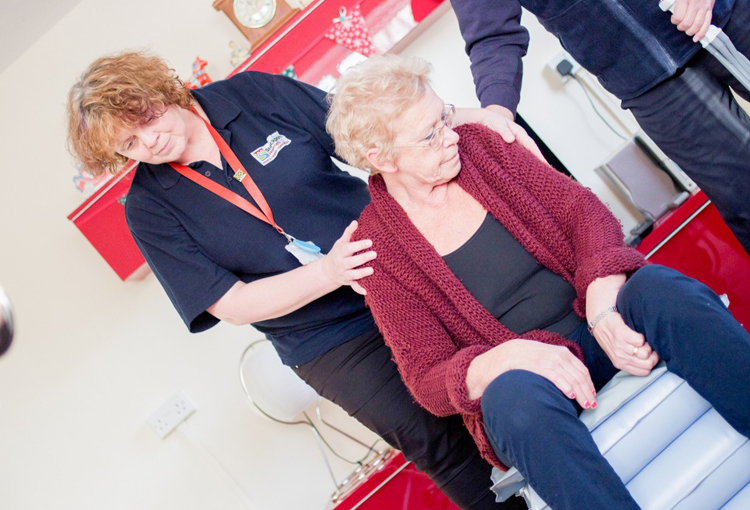
Carecall is a 24-hour tele-monitoring and response service for older and vulnerable people in Stockport. Established more than 20 years ago, the service is a not for profit organisation serving a region where the population of those aged 65 and over is 16.4% and the highest seen in any UK census.
Carecall was one of the first telecare organisations of its kind in the UK and provides more than 6,000 clients a range of support services including telecare monitoring, CCTV support, Concierge services and out of hour’s repairs.
The demographic of the clients being served by Carecall means lifting fallen clients is a regular part of the working day for the company’s 28 frontline staff. In 2006 the organisation was the first telecare company to select the Mangar ELK as their lifting equipment of choice and it is now used in the field on a daily basis.
Responding to an average 200 call outs a month, Carecall report around 80% of these are to unhurt fallen clients. Team Leader Mathew Carter said;
“Our telecare service is a great way of supporting vulnerable people to live well in their own home. When someone falls we respond quickly and as long as they are uninjured, use the ELK lifting cushion to raise them off the floor.”
Carecall clients are provided with an alarm unit and a pendant which is worn around the neck. If customers are in distress or need help, they simply press the button on the unit or on the pendent and the alarm is raised at the Telecare Centre, where call handlers recognise the caller and deal with the problem.
Mathew adds;
“Our priority is to recruit front line staff who can reassure clients and respond empathetically in any situation. They come from a wide range of backgrounds, from the police and security to retail and care. To ensure they can perform their duties safely, we provide regular manual handling and first aid training so all clients are properly assessed for injury before they are moved.
“We rely on the ELK lifting cushion for every lift we do, even when the fall has happened in a confined space such as a bathroom or kitchen.”
Carecall saves money by reducing the proportion of falls related calls that result in a hospital admission. 80% of calls are to unhurt fallen patients, which equates to around 1920 calls per annum where the client does not require hospitalisation. With the average call out charge for an ambulance costing circa £250, Carecall saves the ambulance service approximately £480K per annum.
Mathew concludes;
“Providing clients with efficient and safe support is our priority. Well trained, friendly staff using the right equipment enables Carecall to deliver a first class service day in day out.”
For more information on Mangar patient lifting devices, click here.
Case Study: Crisis Response Falls Team Advocates The Mangar ELK

The Mangar ELK is now a key piece of equipment in the majority of ambulances in the UK, reducing the risk of musculoskeletal risk to paramedics and enabling dignified lifts for fallen patients.
In 2011 Northamptonshire County Council and East Midlands Ambulance Service NHS Trust set up a service to treat people who have suffered a fall and help them to avoid another accident.
The Crisis Response Falls Team was launched to respond to the fact that falls at home, especially those involving frail older people, account for a large proportion of EMS’ calls. Nationally, around 30 percent of adults who are over 65 and living at home will experience at least one fall a year. This rises to 50 percent of adults over 80 who are either at home or in residential care.
Changes in social demographics is seeing a trend towards more people with higher degrees of dementia and because they are fragile and often more agitated, results in more frequent falls both at
home and in a residential care setting. The service recognises that although distressing, most falls are not life-threatening and by dedicating resources to helping these patients we can ensure
other crews are free to deal with emergencies. The Crisis Response Falls Team developed extra skills in treating patients who have fallen and invested in two specialist falls ambulances with Mangar ELK lifting equipment to aid patients.
To date, the service has helped more than 700 patients, allowed more people to be treated in their comfort of their home and reduced repeat falls. In 2012 the service delivered a 5 percent reduction in
repeat falls when compared to 2011. The scheme makes a real difference, especially to vulnerable older people who prefer to remain independent and safe in their own homes after a fall, rather than having the stress of going to hospital unnecessarily.
Case Study: Norfolk Swift Response Service Introduce Mangar ELK
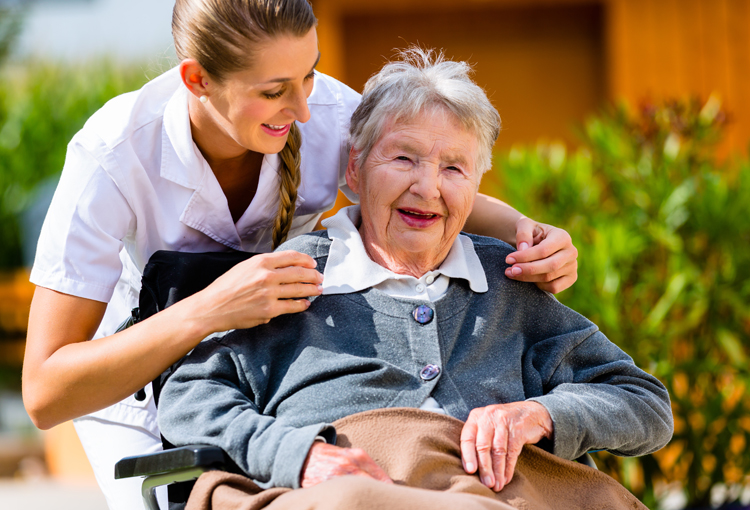
Norfolk Swift Response Service provides 24 hour help, support and reassurance for urgent, unplanned situations that happen in the home, but do not need the attention of emergency services. The main functions of the service are personal care, welfare checks, domestic emergencies, shopping, on-going care needs and lifting people who have fallen, but are stating they are uninjured.The free service is offered by Norfolk County Council to the 880,000 residents in the region. Over the last ten years, the population aged over 65 has increased by 23% in Norfolk, with many in this demographic living in the more rural areas of the county. Funded by the CCG, Swift employs 60 in their response team who respond to over 14,000 calls a year.
How do Mangar Health help?
Over 30% of the calls Swift respond to are to help people who have fallen. Calls for assistance come from a mix of sources but mostly from friends and neighbours of the fallen person or from Alarm Call Services. From the time of the call, the Swift team endeavours to get there within an hour. Located in five locations across Norfolk; Kings Lynn, Dereham, North Walsham, Great Yarmouth and Norwich, the response teams carry a Mangar Camel and ELK to assist their carers lifting fallen residents.
Making sure Norfolk residents feel safe is a priority for Swift. Team members always show identity cards when arriving at someone’s home and are dressed in uniform.
Heather Rimmer, the Norfolk Swift Co-ordinator, has worked with the team for more than 6 years and has seen the service grow and evolve since joining.
Heather says, “Our priority is to help someone who has fallen, but is uninjured, to stay in their home. In many cases we will ask the Norfolk Falls Teams to visit the resident and assess the situation to see if any interventions are required to prevent a further fall.
“Our team use a Mangar Lifting Cushion to raise the fallen person from the floor. The cushions provide a safe lift for the resident but also help prevent musculoskeletal injury to our staff. Because of the amount of falls we attend, the lifting cushions are used every day and have been for nearly 10 years. They are a reliable piece of equipment that we wouldn’t be without. “
The team also carry additional charging cradles and batteries to ensure the Airflo Plus, which is used to inflate the lifting cushions, always has enough power. Equipment is maintained and serviced by Mangar’s in-house service team. An engineer visits each Swift office once a year to ensure the lifting cushions are in good working condition.
The Swift Response Team members have had tailored first aid and manual handling training but are only called upon if it believed emergency services are not required. This allows the County’s paramedics to answer priority emergency calls and means an uninjured fallen Norfolk resident gets a visit from the Swift Response team sooner than they would if they had to wait for an ambulance.
Heather says, “It is really important to lift someone from the floor who has fallen as quickly as possible, even if they are uninjured. Long lies on the floor for the elderly are associated with higher mortality rates. It may also cause the fallen person to develop a fear of falling again, which reduces their future activity rate and can have a detrimental effect on their health. ”
The UK government projects that the over 65s will nearly double from 10 million to more than 19 million by 2050. HSE reports that 30% of this demographic will fall at least once a year, rising to 50% in the over 80s. The Norfolk Swift Team has recognised the need to manage the challenges of falls within an ageing population and implemented a pioneering project, which addresses the needs efficiently and effectively.

